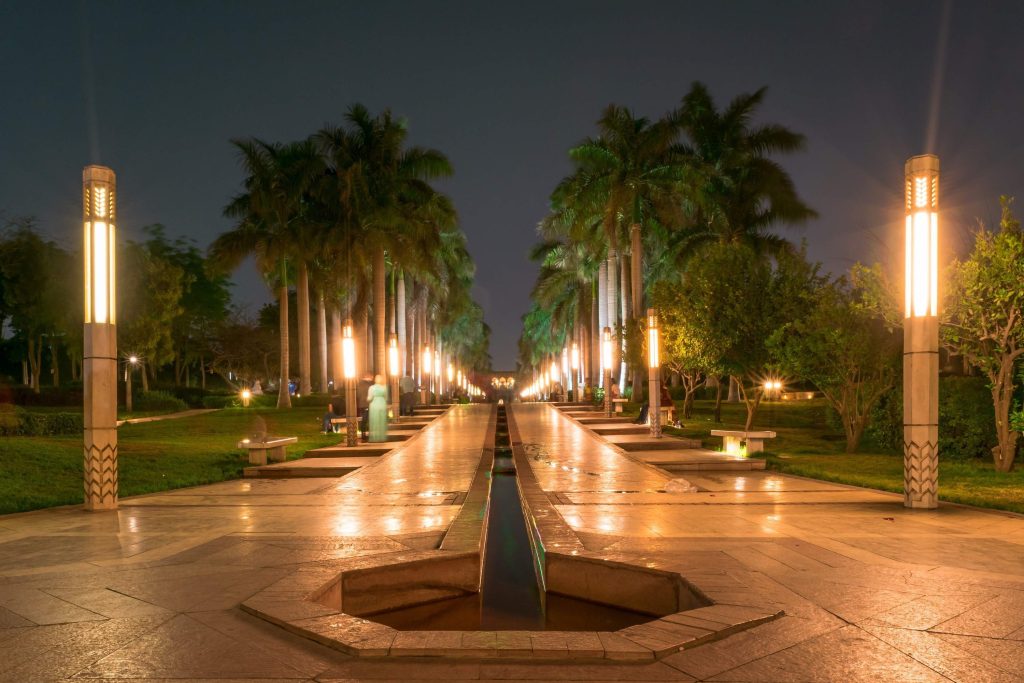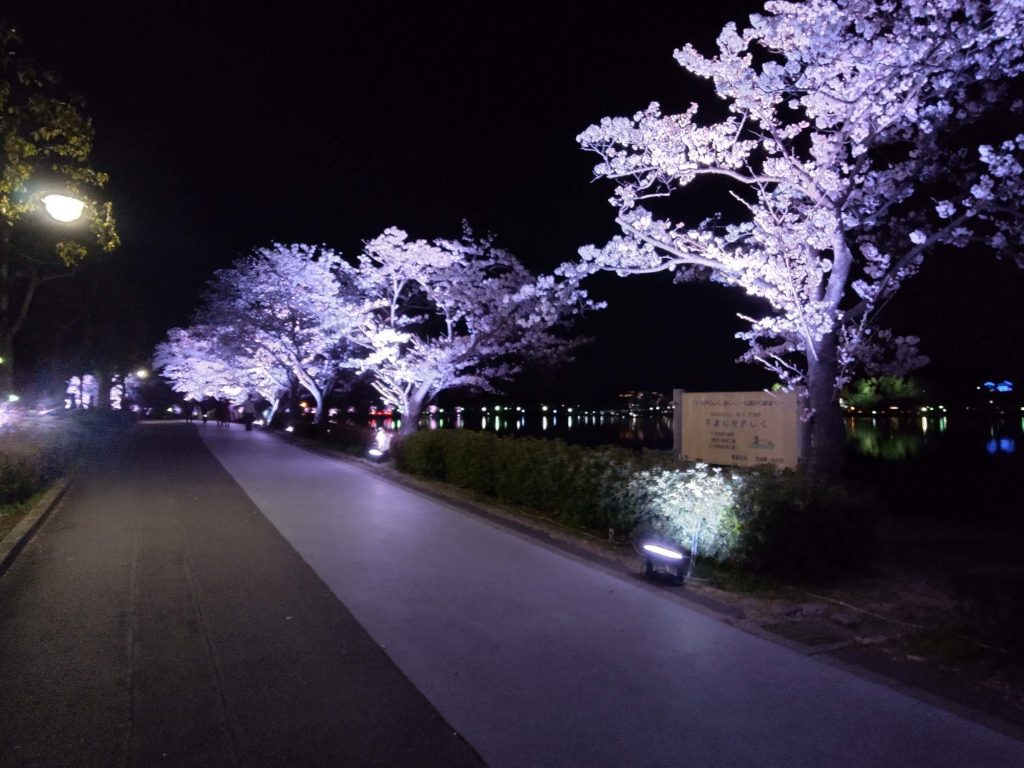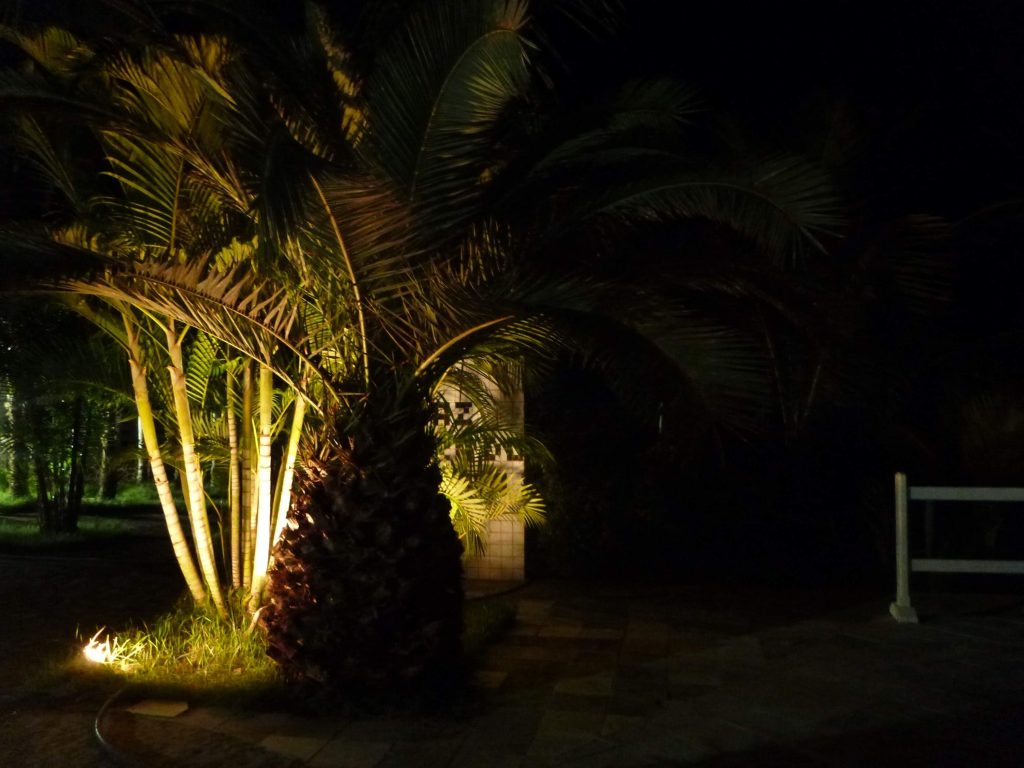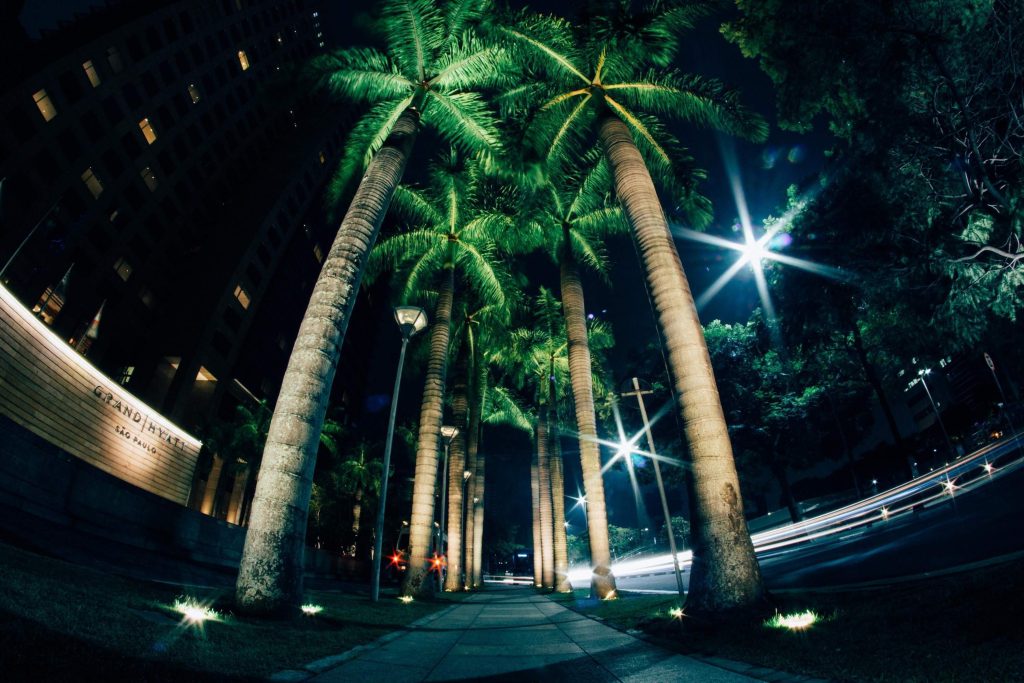Introduction to Landscape Lighting Spacing
Unveiling the Elegance of Landscape Lighting
Landscape lighting, at its core, is an art form that enhances the beauty of outdoor spaces. Stylish lighting adorns gardens, patios, and yards after dusk while also providing functional benefits such as safety and security. Landscape lighting brings out the architectural features and natural elements of a property, creating a delightful visual experience that extends well beyond daylight hours.
The True Radiance of Landscape Lights: More Than Just Lighting
In addition to accentuating the aesthetics of your outdoor settings, landscape lighting can transform your yard into an inviting space for evening gatherings or a tranquil retreat for stargazing. With strategic placements and appropriate light intensities, these lights can create various moods and ambiances ranging from warm and welcoming to cool and serene.
A Beacon in the Night: The Practicality behind the Beauty
Beyond aesthetic enhancement, landscape lighting offers practical advantages as well. It significantly improves visibility along pathways, reducing potential trip hazards when navigating through gardens or backyards during the night. Moreover, it acts as an additional layer of security by deterring trespassers with strategically brightened zones around your house.
Landscape Lighting Definition
An Overture to Outdoor Illumination
Landscape lighting refers to the use of outdoor illumination for both private and public landscapes; this includes gardens, buildings, or structures within these landscapes for aesthetic purposes, safety reasons, or recreational activities such as social events or sports games. This practice involves different types of lights, including spotlights (to highlight specific objects), pathway lights (for safety along walkways), and wash lights (for broad coverage), among others, depending on the requirement.
The Alchemy in Light: Understanding Types & Techniques
The magic in landscape lighting lies not merely in the light fixtures used but also in the techniques implemented. From uplighting, where lights are positioned at ground level pointing upwards to highlight certain features, to silhouetting, where lights are placed behind a feature, creating a dark outline against a lit background, these lighting methodologies vary based on the intended purpose and desired impact.
Importance and Benefits of Properly Lit Space
Casting Light on Landscape Lighting Spacing
Proper spacing is vital in landscape lighting as it directly affects visibility and appearance. Too much space between lights can lead to dark spots or harsh shadows, interrupting the visual flow. Conversely, lights placed too close together might create an overly bright area, causing glare or making a space feel smaller.
Balancing Brightness: The Harmony of Lights & Shadows
Correctly spaced landscape lighting can enhance texture, depth, and color within an outdoor setting; it’s about striking the right balance between light and shadow. This delicate equilibrium aids in accentuating features without overpowering them while simultaneously providing adequate lighting for practical uses.
Shining through Practicality: Enhanced Safety and Security
Well-spaced landscape lighting enhances safety and security by ensuring sufficient brightness along pathways or entrances. By eliminating sudden shifts from lighted spaces to dark ones – which could pose potential hazards – proper light spacing contributes not only towards aesthetic appeal but also towards personal well-being.
Understanding Landscape Lighting Spacing
The Enigmatic Science Behind Light Spacing
The science of landscape lighting spacing is a journey into the realms of optics and design. The first aspect to consider is light spread and intensity. The distribution of light in a space, or its spread, combined with its brightness or intensity, creates the ambience and functionality of your outdoor area.
Every light source has a specific lighting radius, which is the area that the light can effectively cover. A thorough understanding of this concept assists in determining where to place lights for achieving both aesthetic appeal and practical function.

Next, we delve into the effect of different types of lights on spacing. Various lighting fixtures produce distinct types and qualities of lighting. For instance, floodlights cast a wide beam suitable for lighting large areas such as patios or driveways, while spotlights focus intense beams on specific targets like statues or specimen trees. Consequently, these fixtures demand different placement strategies to optimize their effectiveness.
In essence, comprehending light dispersion principles paves the way towards an effective landscape lighting layout. It empowers you with insights on how far apart to space lights without creating dark spots in between or causing excessive overlapping that results in glaring hotspots.
Factors that Wield Influence over Landscape Lighting Spacing
Moving forward, let’s explore other elements influencing landscape lighting spacing, beginning with the size and shape of your area. Larger landscapes naturally require more lights than smaller ones to ensure adequate lighting coverage across all regions. The overall shape also matters; elongated landscapes may need strategic longitudinal placement, while circular gardens might benefit from radial arrangements.
The purpose of your space also significantly impacts your lighting setup strategy. If it’s predominantly for entertainment purposes, such as parties or barbeques, you will want ample bright lights spread evenly throughout the outdoor area.
Conversely, for security purposes, certain areas like entrances and dark corners may require more focused illumination. These functional considerations profoundly influence the spacing between your lights.
The types of plants and features in your landscape can also affect light placement. Different plant species reflect or absorb light in varied ways due to differences in color, texture, and leaf density. Similarly, features like benches or gazebos can either obstruct or reflect light depending upon their material and placement.
Understanding these factors is crucial for creating an efficient landscape lighting plan that judiciously utilizes fixtures while achieving desired aesthetic and functional outcomes.
General Guidelines for Landscape Lighting Spacing
An essential aspect of landscape lighting is the meticulous placement of each luminous feature. The right configuration can elevate a garden’s aesthetics, ambience, and functionality.
Lighting the Way: Pathway Lighting
Pathway lighting serves a dual purpose – it not only illuminates the path to ensure safe movement but also accentuates the beauty of your landscape at night. The recommended distance between each light depends largely on their respective luminosity and spread.
Generally, pathway lights should be positioned about 10 feet apart to create a subtle yet effective glow that does not overwhelm the senses. However, this rule isn’t set in stone; every pathway has its own unique characteristics that require careful consideration.
For instance, curves or bends in the path may necessitate closer spacing to ensure visibility around these tricky areas. Similarly, steps can often cast shadows that mask their presence in low-light conditions; therefore, additional lighting might be necessary to prevent any unfortunate missteps.
Showcasing Nature’s Canvas: Spotlighting or Uplighting for Trees and Structures
Spotlighting or uplighting is an artistic way of highlighting features such as trees or architectural elements within your landscape – effectively turning them into nighttime focal points. The specifics on positioning lights relative to an object’s size and shape are vital in creating dramatic effects that add depth and character to your outdoor space. For instance, larger trees may require several spotlights placed at different angles to convey their towering grandeur fully.

In contrast, smaller structures might need just one strategically positioned light source for optimal impact. Moreover, considering factors such as the texture of the tree bark or architectural material can influence how light interacts with these surfaces – resulting in captivating lighting nuances.
Another interesting aspect lies in altering spotlight positions according to different seasons when trees change their foliage. A well-lit bare tree during winter can look hauntingly beautiful against a snowy landscape, while the same tree may require diffused lighting when it’s in full bloom to soften its vibrant colors.
Textured Lighting: Wall Washing or Grazing Techniques for Walls and Hedges
Wall washing or grazing techniques involve shedding light on large flat surfaces or dense hedges to create visually appealing contrasts of light and shadow. This technique is particularly effective in accentuating textured walls, as the play of light and shadow heightens their tactile appeal.
Spacing for wall washing or grazing should be such that the light source is placed at a slight distance from the wall, angled sharply to graze across its surface. The resulting effect creates a fascinating interplay of highlights and shadows that adds depth and dimension to otherwise flat surfaces. Lighting techniques are tools in your garden design arsenal.
Use them judiciously, altering their position according to your landscape’s evolving needs, breathing life into your outdoor space with well-spaced, cleverly positioned lights. This delicate balance between beauty, functionality, and safety is what makes landscape lighting an art form in itself.
Detailed Analysis on Niche Subtopics in Landscape Lighting Spacing
The Influence of Bulb Wattage and Beam Angle on Light Placement
Decoding the Luminous Intricacies: Bulb Wattage and Beam Angle
The relationship between bulb wattage, beam angle, and light placement is akin to an intricate choreographed dance. The wattage of a bulb determines its luminous output. Higher-watt bulbs produce a more intense light, which can illuminate larger areas but could also create harsh shadows if not positioned correctly. Conversely, lower-watt bulbs produce softer lighting suitable for creating intimate, cozy atmospheres.
Furthermore, the beam angle plays a substantial role in dictating the breadth of light distribution. A narrow beam angle creates a concentrated circle of light perfect for spotlighting or accentuating architectural features or specimen plants. In contrast, a wide beam angle provides ambient lighting that sets the tone for outdoor living spaces.
The interplay between these two elements signifies the necessity to adjust light placement accordingly. High-watt bulbs with narrow beams should ideally be situated farther from their focus object to prevent an overly harsh effect, whereas low-watt bulbs with broad beams may need closer positioning to achieve desired coverage.
The Dance Continues: Further Considerations
However, it’s also important to note that while wattage and beam angle provide essential guidance for initial positioning, they do not operate in isolation. Other factors, such as fixture type and design, can alter their effects significantly; hence, fine-tuning after installation is often required. Understanding the interaction between bulb wattage and beam angle allows us to manipulate these factors strategically, resulting in an optimized landscape lighting spacing.
Adjusting Light Placement Based on Seasonal Changes in Landscaping
Mirroring Nature’s Rhythms: Adapting Lighting Arrangements to Seasons
Seasonal changes can significantly affect the aesthetics of a landscape, with varying amounts of foliage, flower blooms, and even snow in some climates. These variations necessitate adjustments in light placement to maintain appealing lighting all year round.
For instance, during spring’s vibrant bloom, lights may need to be repositioned farther from flowering plants to prevent washing out their vibrant colors. Conversely, during autumn and winter, when trees shed leaves and landscapes tend toward monotone hues, lights might need to be brought closer or increased in intensity to compensate for the lack of natural color.
Seasonal Shifts: A Dynamic Approach
While it might seem tedious, this cyclical adjustment mirrors nature’s rhythms and keeps your landscape visually compelling across all seasons. A tip for reducing the effort involved is through smart planning during initial installation – selecting adjustable fixtures that can easily be moved or redirected as needed. Landscape lighting is not a set-it-and-forget-it endeavor but an ongoing relationship with your outdoor space that responds and adapts to its ever-changing moods.
The Effect of Shadows & How to Use Them to Your Advantage
Mastering the Art of Shadows: Strategic Lighting Placement
Often overlooked yet powerfully effective in landscape lighting is the artful use of shadows. Rather than simply viewing shadows as areas devoid of light, they should be appreciated as silent partners that contribute depth and contrast.

Silhouetting is one technique where backlighting an object creates a dark outline against a lighter background. The effect can be especially dramatic when used on sculptural plants or architectural features with unique shapes. Similarly, shadowing – where lights are placed between an object and a wall – casts intriguing shadows onto the surface behind it, creating compelling visual interest.
Shadows: The Hidden Heroes
Moonlighting too exploits shadows to its advantage. By placing lights high within trees and aiming them downward, the branches and leaves cast subtle, dappled shadows akin to natural moonlight. This technique is particularly effective in creating ambient lighting for larger areas.
Mastering the interplay of light and shadow can significantly elevate landscape lighting from merely functional to truly artistic. The conscious positioning of lights to create a balanced distribution of lit and shadowed areas adds complexity, depth, and drama, thereby transforming an ordinary landscape into an evening masterpiece.
Rarely Known Small Details about Landscape Lighting Spacing
Uncommon Tips for Optimizing Light Placement in Water Features
The shimmering allure of water features can be accentuated remarkably by astute lighting. Although many believe that lighting water features involves merely submerging lights, there is a lot more to this subtle art.
One little-known fact is the importance of angle placement. Lights should ideally be angled towards the viewing area, not away from it. This orientation enhances water’s reflective properties and prevents the creation of dark spots.
In addition, underwater lights should not always be placed at the bottom of the water feature; varying depths can lead to more dynamic lighting. The use of floating lights or partially submerged fixtures adds dimension and visual interest to your aquascape.
A third tip pertains to color temperature selection – a seemingly simple yet critical decision often overlooked. Cooler color temperatures (5000K or higher) emulate moonlight and enhance the ambiance around your water feature at night. Meanwhile, warmer temperatures (3000K or less) are suitable for emphasizing fish or plants within a pond.
An equally significant nuance lies in light spacing around fountains or cascades. To create an enchanting effect, place your lights where they will catch movement and reflect off cascading waters rather than solely focusing on static elements like rocks or statues.
Last but not least is acknowledging safety considerations when lighting water features: all lighting fixtures must be designated for wet locations and securely anchored to prevent accidental displacement.
Subtle Tricks to Enhance Garden Textures with Strategic Light Placement
Landscape lighting isn’t just about visibility; it’s also an opportunity to highlight your garden’s textural diversity and bring its unique characteristics into focus after dusk. The interplay between light and shadows can emphasize the texture of various garden elements, such as bark, leaves, stone walls, or pathways.
For instance, casting light downwards onto a textured wall can create dramatic shadow effects that amplify the wall’s texture. This technique, known as ‘grazing’, is most effective when lights are placed close to the surface and directed almost parallel to it.
Another trick involves using backlighting to enhance plant textures. By placing a light behind an object with a distinct silhouette – like an agave plant or sculpture – you create a stunning outline effect that accentuates intricate details otherwise lost in darkness.
Similarly, uplighting from beneath large-leafed plants or trees can expose their unique vein patterns and shapes. The interplay of light filtering through the foliage often creates mesmerizing shadow patterns on surrounding surfaces.
Remember not to over-light your landscape. Too much light can flatten textures instead of highlighting them. Aim for balance; let patches of darkness exist to contrast with areas of light for maximum dramatic effect.
Hidden Pitfalls when Adjusting Lights for Different Weather Conditions
In landscape lighting design, weather considerations frequently get short shrift, though they significantly affect lighting outcomes. For instance, during snowfall or heavy rain, fixtures placed low might become obscured and ineffective due to accumulation or splashing water. Therefore, it’s worth considering fixtures that stand taller than your average snow level in winter-prone areas and have adequate splash resistance in rainy locales.
An overlooked detail pertains to seasonally deciduous trees and shrubs that provide ample shade in summer but lose leaves come fall, revealing previously hidden lights glaringly exposed without their leafy cover. Accordingly position these lights so they aren’t obtrusive during leafless months yet still effective when foliage returns.

Furthermore, be wary of color temperature shifts in cold weather. Some LED and fluorescent lights can emit a noticeably bluer tone in colder conditions, which may alter the desired ambiance of your outdoor space.
Wind, too, can pose a challenge if your landscape includes tall or flexible features like trees or bamboo shoots. Strong winds might cause these elements to sway dramatically, altering light angles and shadow patterns. Here, adjustable fixtures that can be easily redirected come in handy.
Note that certain materials react differently to weather changes. For instance, metal fixtures might get hot under summer sun but be chilly to touch in winter, while plastic fixtures might become brittle over time with constant UV exposure. Invest wisely in durable, weather-resistant materials for longevity.
Conclusion: The Artistry Behind Effective Landscape Lighting Spacing
A Symphony of Light
Landscape lighting spacing is a dynamic blend of science, art, and aesthetics. Like the maestro conducting an orchestra, each light placement has a unique role in creating the overall ambiance. It is not just about illuminating dark spaces or warding off potential intruders; it’s also about painting with light to highlight the beauty of nature and architecture that would otherwise remain unseen in the darkness.
The adroit precision involved in landscape lighting spacing often goes unnoticed by observers, yet its impact is undeniable. Whether it’s creating enchanting shadows that dance on a garden wall or a softly lighted pathway that beckons visitors toward your front door, effective lighting spacing can transform an ordinary landscape into something extraordinary.
Yet this transformation doesn’t happen by sheer happenstance. It requires careful planning and thoughtful attention to detail. It involves understanding not only the scientific principles behind light intensity and spread but also recognizing how these principles interact with individual features within your landscape.
The Luminous Path Forward
Innovation continues to shape the world of landscape lighting. New technologies are constantly emerging that offer greater energy efficiency, more precise control over light intensity and spread, and enhanced durability against weather conditions. As these advancements unfold, they will undoubtedly open up new possibilities for creative expression through landscape lighting.
However, one fundamental principle will always remain constant: effective landscape lighting spacing depends on balancing practical considerations with artistic vision. Too much light can be as problematic as too little; striking the right balance ensures that each aspect of your landscape gets its moment in the spotlight without overwhelming others.
The Balance Between Practicality and Aesthetics
Revealed Practicality
Effective landscape lighting spacing constitutes a crucial element in any successful outdoor design project. Beyond its practical application for enhancing safety and security, it serves a more profound purpose. By shaping and controlling light, you can manipulate perceptions, guiding the viewer’s eye towards intended focal points, creating depth and texture, and evoking a desired mood or atmosphere.
It is in this intricate dance between light and shade that the true essence of landscape design comes alive. Through strategically placed lighting fixtures, an everyday garden can be transformed into an ethereal nighttime wonderland; a simple pathway can become an inviting beacon.
A Bright Future
As our understanding of lighting principles evolves and new technologies continue to push boundaries, we will undoubtedly discover even more ways to use light as an artistic medium in our landscapes. Yet no matter what innovations come our way, the balance between practicality and aesthetics will always remain at the very core of effective landscape lighting spacing.
Landscape lighting spacing is not just about illuminating outdoor spaces but about creating visually stunning landscapes that captivate and enchant all who gaze upon them. It’s about turning the ordinary into extraordinary through strategic lighting. To master this craft is to learn how to paint with light itself – a skill that holds endless possibilities for creative expression within your outdoor living space.
You may also be interested in the following posts:
